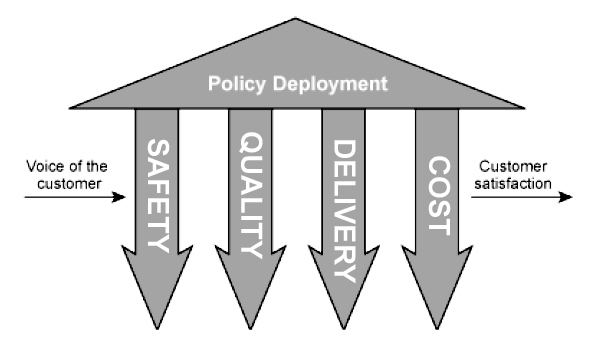?What is Hoshin Kanri
*Written by: Zaher Basheer Al Abdo
Strategic management thinker, writer, and researcher in institutional development.
This proposition comes as a continuation of what I discussed in this regard in my book “Integration or Death.. Strategic Management by Integration #MBI, 2018″, where I discussed in the first topic of Chapter Eight under the title “What are the deficiencies of KPI’s performance indicators” by Parmenter after we found that the foundations of scorecards Balanced #BSC introduced by #Kaplan and #Norton drew its roots from the Japanese concept of #Hoshin_Kanri.
In fact, what made me go back to talking about this subject before the publication of my book ” #Indicators of #Institutional #Excellence and #Strategic #Development” were two things that made me discuss this content with experienced and specialized people in order to take into account the results of that in my next book.
Since this topic is based on important basic concepts, I found that I reformulated those concepts in useful and brief terms to benefit from them in building what I would like to present from an applied intellectual development in this context.
What is Hoshin Kanri?
Hoshin’s philosophy was first introduced in the sixties of the last century within the #management practices of #Toyota, #Bridgestone, #Nabibone, and others as a result of working according to the content of the #PDCA #Deming_circle on the one hand, and the content of management with the goals presented by #Peter_Drucker, and the propositions of #Juran, after that the applied concept of Hoshin developed during the seventies Up to what was published by the #Japan_Standards_Association for a series of works based on Hoshin practices in 1988, and the Hoshin application moved to America in the eighties and was applied with special models from Hoshin Kanri in each of #Xerox, #Procter & Campbell, and #Hewlett Packard…
The basis of the Hoshin plan is based on reviewing the results of the previous year to build the new plan, provided that it includes a series of activities of the organization within periodic planning tables, where the results of implementation are reviewed in comparison with what is planned to make the appropriate correction or improvement, and Hoshin planning can be expressed as employing the #quality policy in the #organization.
The difficulty of applying Hoshin in some organizations is due to the necessity of strict application, long-term commitment and continuous support from senior management, because the goals of penetration must be stable for five years. Using measurement standards that monitor implementation to ensure continuity of continuous improvement of the organization’s core operations.
Note that the Japanese concept of Kanri is a management concept that expresses periodic planning and is applied at two levels:
- The strategic level, which focuses on a specific number of #strategic goals between 2 to 5 called the goals of #penetration, adopts the completion of significant improvements at the level of the work of the organization or one of its departments.
- The daily level: It is based on the continuity of the flow of activities as the basics of daily work. It is important to monitor them to take corrective actions in a timely manner in accordance with the content of continuous improvement #Kaizen.

